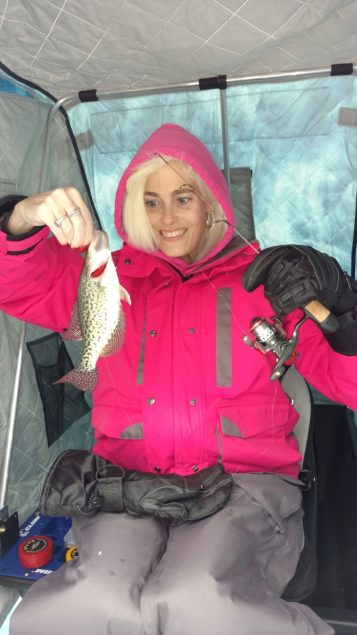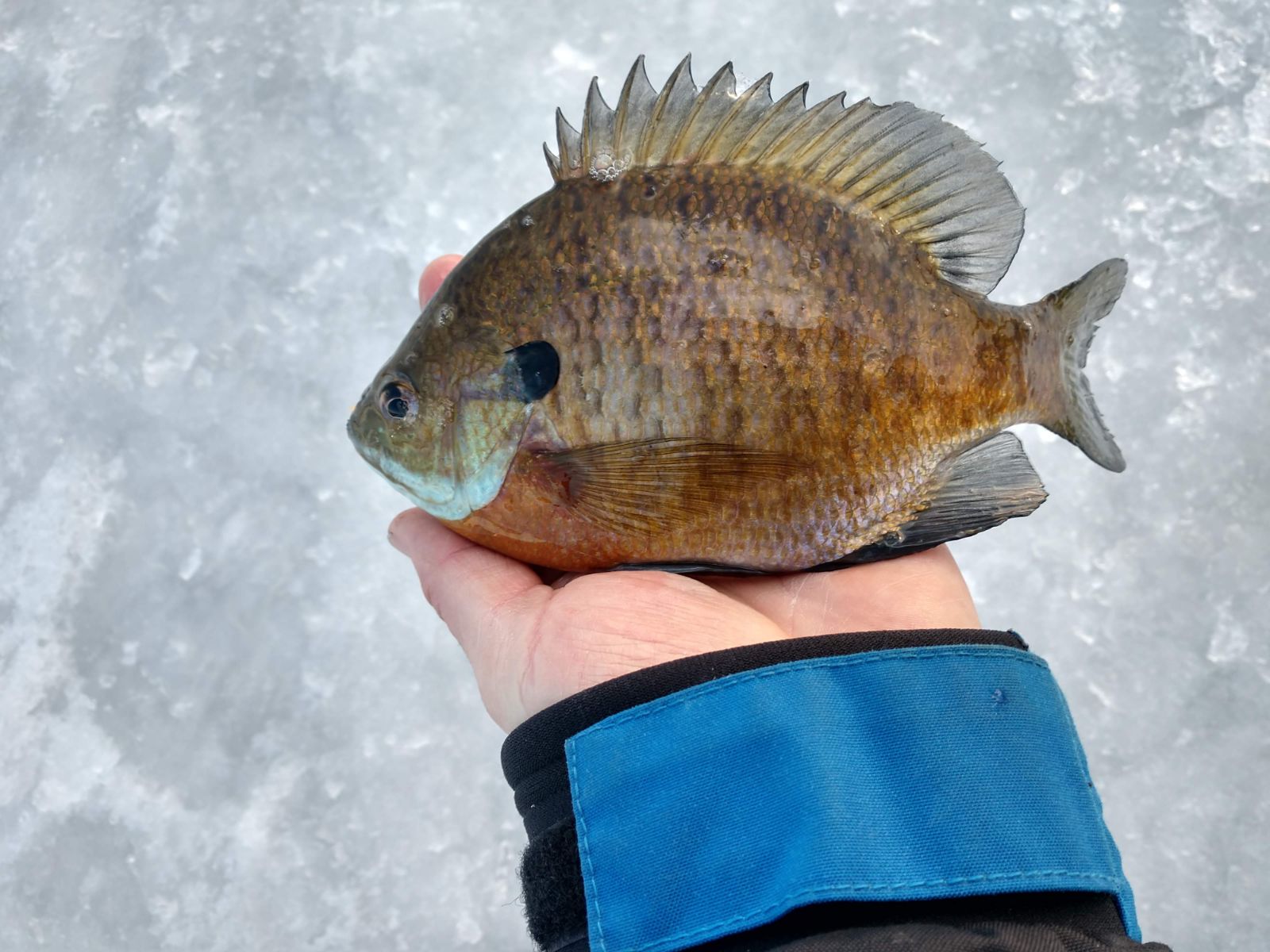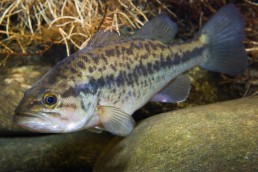Fox Chain Report
SHARE THIS POST
During February in a “normal” year, fish on the Fox Chain will be in their midwinter patterns, moving deeper with the thicker ice and heavy snow cover. The last few years, however, we have experienced milder winters. For the most part, fish have been staying shallow. Weeds have been remaining green and there has been plenty of oxygen and baitfish in the shallows.
On the north lakes, weed beds have been sporadic due to weed removal efforts during the summer months. The key now is to cover flats and look for thicker, greener weed clumps. If you find an area of better weeds, key in on the pockets in the weeds. You can even move shallower than that, hitting inside weed edges extending on up to the shoreline piers. Nice crappies and bluegills can be found here, especially on Channel and Catherine.
Start by punching a bunch of holes over key areas and hole-hop or ice-troll to find and catch active fish. Experiment with horizontal and vertical hanging baits in both lead and tungsten. Carry a selection of both live bait and soft plastics. Always have red and white spikes, plus waxworms, on hand. Fathead minnows can be great for crappies and stripers. Use larger-size fatheads to catch large crappies.
Soft plastics can be great for panfish and outproduce live bait some of the time. When the fish are hitting soft plastics, save time by not having to rebait after every bite. You can get the bait down the hole quicker, resulting in more fish on the ice.

There are many great soft plastics on the market: Custom Jigs & Spins, Clam, Little Atom, Northland and local favorites like Bluegill Chuck’s come in many shapes, sizes and colors.
Some days, the fish are not aggressive, and you might only be able to catch a fish or two out of a single hole. Move to another hole, and the same thing happens: You catch a fish or two and the action stops. That is a great time to punch a bunch of holes and cover water. By day’s end, catching a fish or two out of each hole can add up to a bunch. Mobility is the key to success.
In February, a lot of bigger crappies suspend in main-lake basins. If you have forward facing sonar, scan the basin to locate schools of fish. If not, just drill more holes and search for them with your conventional sonar or flasher unit. The North end of Channel and Catherine and the basins in Lake Marie have trophy-class, slab crappies pushing 17 inches and 3 pounds. Fish bigger spoons or Jigging Rapalas and tip them with larvae or a minnow head. A larger tungsten jig tipped with larvae or soft plastics, jigged aggressively, can attract larger crappies.
Channels have also been good and holding nice crappies and bluegills throughout the winter. Again, cover water. If you are on a school of small bluegills, a short move could get you into a school of bigger crappies and bluegills. If the channels are shallow, you can fish out of a shanty and sight fish. Actually, seeing the fish can teach you how they respond to a certain jigging technique and how they hit the bait. Plus, it is exciting to see fish coming in to your presentation.
Are you enjoying this post?
You can be among the first to get the latest info on where to go, what to use and how to use it!
Neilson’s Channels on the lower Fox River in Port Barrington is another great, shallow-water system that holds nice fish throughout the ice fishing season. Crappies and bluegills, white and yellow bass, plus yellow perch, channel catfish and largemouth bass are all fair game. Moving is key to finding the fish. Access is through Hermann’s Rest A While Bar and Grill. There is a small, $5 parking fee—and they sell waxworms. Stop in at the end of the day for a bowl of Wayne’s award-winning chili.
There are excellent populations of white and yellow bass, also called stripers, throughout the Fox Chain. Try Fox Lake, Lake Marie, Petite Lake and Pistakee Bay.

Drilling lots of holes, searching with electronics, and hole hopping is key to finding and catching stripers. Spoons like Striper Specials, Kastmasters and Swedish Pimples are excellent choices. Placing red spikes on the hooks will put more stripers on the ice, but also experiment with different live baits and soft plastics. If you find wigglers at the bait shops, they can be like candy to a striper. When you get on a school of stripers, they can be aggressive, and the action can be fast and furious. They put up quite a tussle on light tackle and are a blast to catch.
Stay mobile, pay attention and fine-tune your presentation for increased success. Keeping a horizontal bait horizontal on your line is a small but important factor that can put more fish on the ice. Changing from a horizontal presentation to a vertical presentation can be a positive factor and switching from tungsten to lead, or vice versa, can also make a difference. Switching between different live baits, or from live bait to soft plastics could turn your trip around. Experimenting with different jigging cadences can turn a neutral fish into an aggressive biter.
Have several rods pre-rigged and ready to go so you can quickly switch presentations. Jigging from the top of the hole and working your way down in the water column helps you catch the high-riding fish first and catch the most fish out of a school. Pounding the bottom can attract yellow perch, crappies and bluegills that are feeding on blood worms or insects.
For a complete selection of live bait, tackle and up-to-date fishing reports, stop in at Triangle Bait Shop in Antioch. They have a complete selection of live bait and tackle for the Fox Chain and surrounding waters.
This February, get out on the ice and catch a bunch of fish. Remember to practice selective harvest and only keep some mid-size fish to eat.
MWO
SHARE THIS POST
You may also like...
Did you enjoy this post?
You can be among the first to get the latest info on where to go, what to use and how to use it!
Phil Piscitello
Phil Piscitello has 45 years of experience as a multispecies angler on ice and open water. He is a fishing guide, master charter captain and seminar speaker guiding in northern Illinois and southern Wisconsin. Picitello is also a regular guest on Chauncey’s Great Outdoors radio show and MidWest Outdoors TV show. He has fished all five Great Lakes and many major rivers, lakes, and reservoirs throughout the Midwest.


